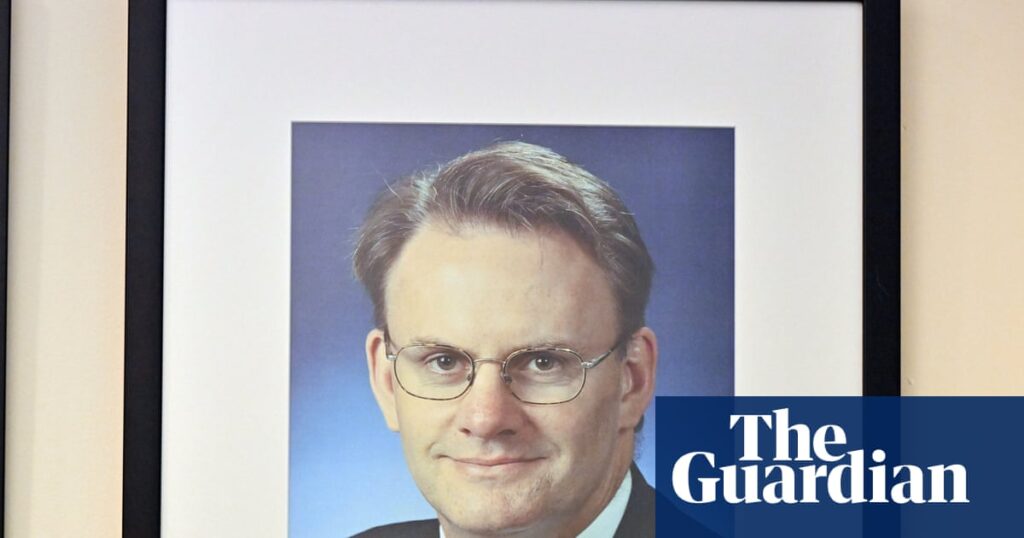
Federal Labor has decided to retain Mark Latham’s official portrait in its caucus room at Parliament House, but with a significant addition: a text condemning the former leader’s actions since his departure from federal politics. This decision comes in the wake of Latham’s recent defamation loss over homophobic remarks and allegations of domestic violence and inappropriate behavior.
Labor’s caucus chair, Sharon Claydon, informed party MPs on Monday that a consensus had been reached regarding the new caption for Latham’s portrait, which is part of a gallery featuring former leaders. The added text will read:
“In 2017, Mark Latham was expelled from the Australian Labor Party and banned for life. His actions do not accord with Labor values, and fail to meet the standards we expect and demand.”
Background and Historical Context
Mark Latham served as the federal Labor leader from 2003 to 2005. His political journey took a controversial turn when he was expelled from the Labor Party in 2017 after joining the Liberal Democrats to pursue a career in New South Wales politics. Subsequently, he became a member of Pauline Hanson’s One Nation party and currently serves as an independent.
The decision to add a condemning text to his portrait underscores Labor’s attempt to reconcile its history with its present values. Finance Minister and Minister for Women, Katy Gallagher, emphasized the importance of acknowledging Latham’s expulsion and the discord between his actions and the party’s values. She stated,
“Action was taken back then in light of some of his behavior, and also leaving to join another political party.”
Controversies and Allegations
Latham has been embroiled in several controversies, including a defamation case loss concerning homophobic comments directed at NSW independent MP Alex Greenwich. Moreover, he has faced criticism for disclosing confidential medical information about Greenwich in parliament. These incidents have intensified calls for his resignation.
Adding to his legal woes, Latham is facing allegations of emotional, physical, and financial abuse from a former partner, Nathalie Matthews, who is pursuing a private apprehended violence order against him. Leaked text messages have further fueled criticism against the Legislative Council member. Latham, however, has strongly denied these allegations.
Labor’s Stance and Public Reaction
The move to update Latham’s portrait with a condemning text reflects Labor’s commitment to distancing itself from actions that contradict its core values. Gallagher remarked on the necessity of acknowledging past leadership while also highlighting the importance of aligning with modern standards. She noted,
“He was a leader, and a leader for two years and sitting there on the wall is an indication of where we have been, and perhaps for all of us, somewhere we don’t want to return to.”
Meanwhile, Latham has responded to the announcement by drawing parallels to Stalin’s purges in Soviet Russia, suggesting on social media that the Labor caucus might as well “go the full Stalin.” This reaction has sparked a mix of criticism and support from the public, reflecting the divisive nature of his political legacy.
Implications and Future Outlook
The decision to retain Latham’s portrait with an added text serves as a reminder of the complexities inherent in political legacies. It highlights the ongoing challenge for political parties to balance historical acknowledgment with contemporary values. As Labor continues to navigate these waters, the implications of its decisions will likely resonate within the party and beyond.
Looking forward, the party’s actions may set a precedent for how political figures with contentious legacies are treated. The move also opens up discussions on accountability and the standards expected of public figures, particularly those in leadership positions.
As the situation unfolds, it remains to be seen how this decision will impact Labor’s image and whether it will influence similar actions by other political entities. The broader conversation about leadership, values, and historical reckoning in politics is likely to continue, shaping the landscape of Australian political discourse.





